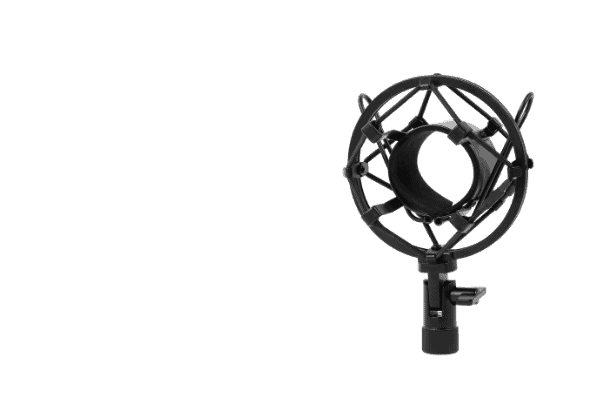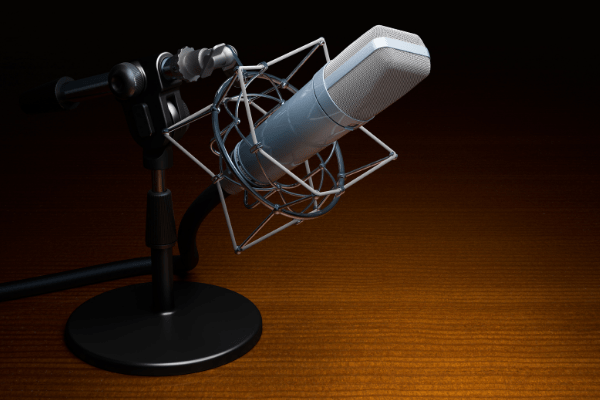If you’ve just started recording music or podcasts, you’re probably investing in a lot of recording equipment, but after buying a microphone and a stand, what else do you need? If you can save money, you should, but what’s necessary and what’s extra? Do you really need to buy a shock mount?
You don’t really need a shock mount to record, but most professionals recommend it, as it reduces vibrations and prevents low-end noises from getting recorded along with the sound. It also increases the recording quality, especially if you’re using a low-quality mic, and decreases excessive noise.
In the rest of this article, I’ll talk about what shock mounts do for recordings, why they’re essential, and how to use them effectively. I’ll also list some other ways to improve sound quality while recording in a home or professional studio.

Why Do You Need a Shock Mount?
A shock mount is recommended for almost every recording situation. You don’t strictly need one to record, but it prevents noise from the microphone or computer from being heard on the final track, making it a vital piece of equipment for high-quality recording.
Mics naturally have a lot of vibrations when they’re recording, especially condenser microphones. These specialty mics record sound by vibrating between a sheet of thin metal and the microphone mesh. Without a shock mount, condenser microphones are more likely to pick up the lower frequencies of vibrations.
So, if you have lots of low noises or a cheap microphone, a shock mount if necessary. The less quality the microphone is, the more it will vibrate as it records. Because it’s not always viable to buy a more premium and more expensive mic, a shock mount is an excellent investment at a much lower cost.
However, some of the more expensive microphones can buzz when they’re recording if they’re set up against the mic stand in a certain way. Every sound setup is unique, of course, and depends on more than just the microphone and mic stand. Making sure your room is soundproof will also reduce extra noise.
No matter how expensive your microphone is, a shock mount will still improve the sound recording quality. You need a shock mount if you want to lower the outside noise of your recording. Any microphone will pick up a small amount of electrical sound during recordings, and the best way to prevent this is to allow it to move separately from the mic stand.
Other things can lower outside noise (like carpet or blankets) but could become a fire hazard if they’re not set up correctly. Shock mounts are generally relatively inexpensive and a great addition to any sound setup, and if you’re trying to record professionally or semi-professionally, a shock mount is essential.
What Does a Shock Mount Do?
A shock mount is a piece of sound equipment that connects a microphone to a mic stand to decrease vibrations. It’s a metal circle with elastic webbing throughout. This webbing holds the microphone in place and absorbs the vibration from the ground, the mic stand, and the recording equipment.
Shock mounts are used in all kinds of recordings and with all sorts of mics. They’re handy for delicate vocals and multi-track bands. With multiple microphones, the amount of vibration adds up and can become difficult to listen to. However, with a shock mount on each microphone, the sound is much cleaner and more precise.
Usually paired with a pop filter, the shock mount also protects the microphone from excess vibrations and structure-borne noise. The microphone can pick up noise that comes from the microphone structure itself, and without a shock mount, these vibrations will show up in the recording.

How Do You Use a Shock Mount?
To set up a shock mount, all you need to do is attach it to the mic stand and then to the mic itself. The shock goes onto the mic stand first – ensure that it’s firmly attached, and then you can add the microphone into the net. Follow the instructions that come with your purchase to do this properly.
Once you’ve set it up correctly, you don’t need to do anything to your shock mount. You can start recording, and it’ll do its job by holding your microphone within its elastics and allow it to move on its own, preventing low-level vibrations and improving overall recording quality.
It’s recommended to buy a shock mount that is compatible with your microphone. Most microphones have an option for a shock mount and pop filter package. While you can buy a universal shock mount, they usually don’t work as well as a product-specific mount. Universal mounts are often the wrong amount of elasticity for the microphone.
For more information, check out what causes and solutions for distortion in microphones.
How Can You Tell if You Need a Shock Mount?
In most situations, a shock mount is recommended for recording. However, there are also moments when they aren’t necessary at all. If a shock mount is somehow blocking your mic setup, you might want to take it off. They aren’t vital to the actual recording process, so you might not need them.
Your microphone and studio setup can be stable enough that low-level vibrations aren’t even a recording issue, but this depends on the microphone setup and room tone quality. If you’re in a professional studio, you might not need the extra stability that a shock mount offers. Alternatively, you might not even mind the extra low-level noise.
There are ways to decide if you don’t need a shock mount, such as using a spectrum analyzer (an extra plug-in or included with several editing software) to determine how clean your sound is. If you record with the analyzer on, you’ll be able to see the level of lower frequencies. If you have a high amount of sounds below 40Hz, you need to add a shock mount.
However, if you don’t have a spectrum analyzer, there is a less highly technical way to figure out whether you need a shock mount. Set up your microphone without a shock mount, and start recording. Walk around the room a few times, especially near the mics. When you playback the recording, you should hear whether or not there are excessive vibrations. If there aren’t, you probably don’t need a shock mount!
Are There Other Ways To Improve Sound Quality?
While a shock mount is an excellent way to improve your sound and lessen low-level vibrations, there are other factors that affect your recordings. Whether you record at home or in a studio, you can keep your space as noise-free as possible.
Here are some ways to improve your recording quality:
- Soundproof your room with blankets or soundproofing material.
- Use a pop filter for vocal quality.
- Select a high-quality microphone that is suited for your purposes.
- Invest in an audio interface, especially if you’re using more than one microphone.
- Set your microphone to the correct setting.
- Adjust your sound and setting levels for the best tone.
- Record a second of silence before you start for room tone.
- Make sure the ambient noise is as low as possible.
- Use post-editing to get rid of other background noise.
Final Thoughts
A shock mount is the best solution to low-level noise and the vibrations that the microphone makes while recording. You can use a shock mount while you’re recording for better quality and less outside sound. While it’s not strictly necessary, you won’t regret the increased sound quality, especially when you’re using a low-quality mic and paired with a pop filter!
Sources
- Lewitt: Do I need a shock mount and a pop filter for my microphone?
- Neumann.Berlin: Do I Really Need a Shock Mount?
- Adventures in Audio: Why Does a Microphone Need a Shock Mount?
- Mynewmicrophone.com: What Is A Microphone Shock Mount And Why Is It Important?
- Neumann.Berlin: What is a Condenser Microphone?
- Musicradar.: What is a Spectrum Analyser?
Recent Posts
QuickTime is a vital app for many Mac users, and if you’ve recently bought a new microphone, you might wonder how to use it optimally. QuickTime cannot record audio content if it doesn’t have...
Every microphone leaves a unique signature on the quality of its output. If you’re a podcaster trying to melt your way into your audience’s hearts, a muddy, distorted recording won’t cut it....
